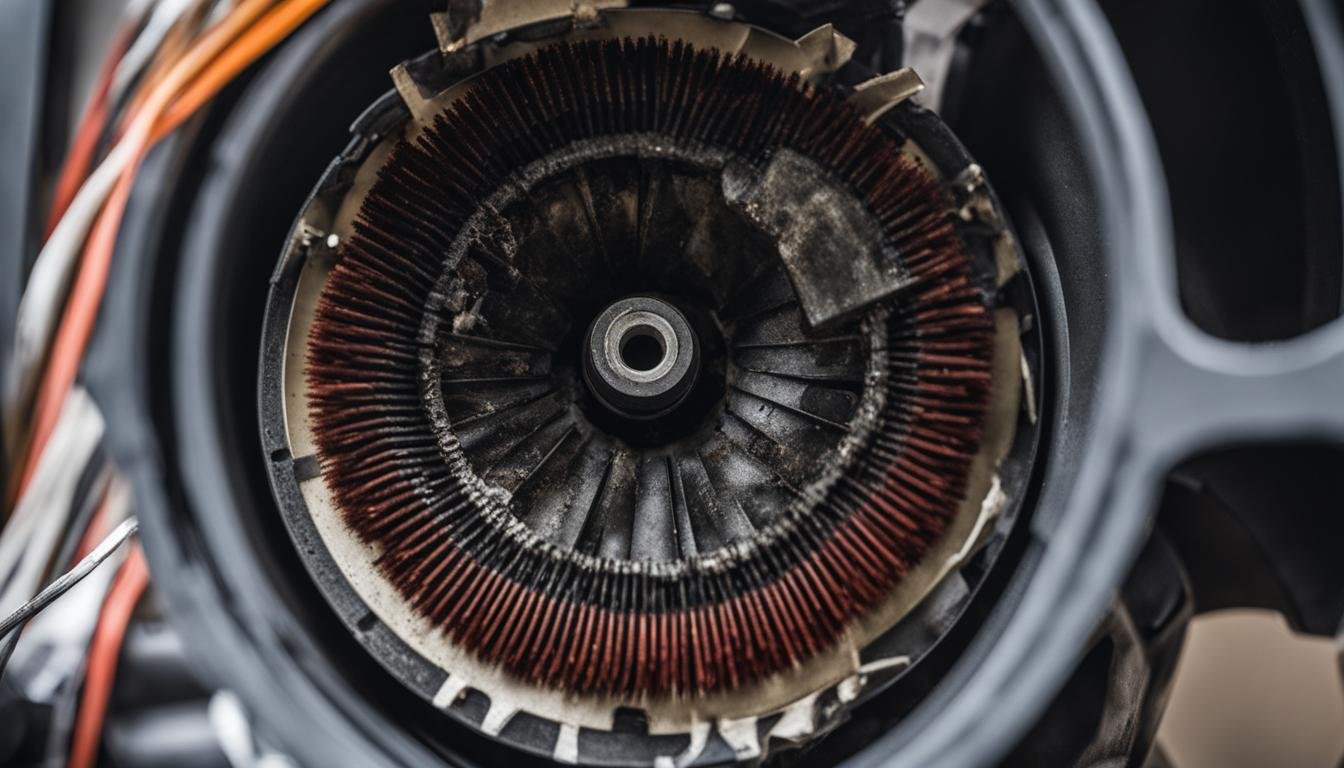As an expert in vacuum cleaner technology, I’m often asked about the inner workings of these essential cleaning appliances. One question that frequently comes up is whether vacuum cleaner motors have brushes. Today, I’m here to shed some light on this topic and provide you with valuable insights.
Vacuum cleaner motors do indeed have brushes, which play a crucial role in their performance and longevity. These brushes, typically made of carbon, help facilitate electrical contact between the motor’s rotating component, known as the armature, and the stationary part, called the commutator. This contact is what drives the motor and ensures its smooth operation.
In everyday use, the motor brushes in vacuum cleaners can gradually wear down over time. The rate of wear depends on factors such as how frequently and how long the vacuum cleaner is used, as well as other considerations like the quality of the motor and the amount of fine dust that passes through it. Excessive heat can also contribute to faster brush wear.
To maintain optimal performance and prevent unexpected motor failures, it’s important to replace worn motor brushes in a timely manner. However, under well-maintained conditions where height settings are appropriate, airways are unobstructed, bags are changed promptly, and filters are kept clean, the brushes can last for several years without significant wear.
Key Takeaways:
- Vacuum cleaner motors contain brushes made of carbon for electrical contact.
- The rate of brush wear depends on usage, quality of the motor, and dust exposure.
- Well-maintained vacuum cleaners can extend the lifespan of motor brushes.
- Worn motor brushes can cause the vacuum cleaner to cut out and fail to operate.
- Replacement brushes for different vacuum cleaner models can be easily found.
Signs of Worn Motor Brushes and Maintenance Tips
While there may not be specific symptoms that indicate worn motor brushes, there are some signs to look out for. If the vacuum cleaner suddenly cuts out and fails to work, it could be due to excessively worn brushes that no longer make proper contact with the commutator. In such cases, it is necessary to replace the brushes.
Regular maintenance of the vacuum cleaner can help extend the lifespan of the motor brushes. This includes:
- Avoiding low height settings.
- Ensuring unobstructed airflow.
- Replacing bags before they are too full.
- Keeping the filters clean.
By following these maintenance tips, the brushes can last longer before requiring replacement. If replacement is necessary, suitable brushes can be found for different vacuum cleaner models, and they can be easily accessed and replaced without removing the entire motor.
Replacing Vacuum Cleaner Motor Brushes
When it comes to the lifespan of vacuum cleaner motors, several factors come into play. Depending on usage, maintenance, and the quality of the motor itself, the lifespan can vary. Older models like the 1977 Hoover Senior and the 1951 Hoover Dustette exemplify the impressive longevity of some motors, lasting for decades without any motor-related issues. However, it is essential to understand that even with well-maintained brushes, other motor components, such as the commutator, may wear out or become damaged, leading to motor failure.
If you find yourself in need of replacing motor brushes in your vacuum cleaner, it is advisable to consult professionals for central vacuums as they often require specialized brushes. For other vacuum cleaner models, replacement brushes are readily available online or through authorized dealers. It is crucial to select the correct brushes specific to your vacuum cleaner model to ensure compatibility and optimal performance.
When replacing the brushes, it’s vital to ensure their proper seating and contact with the commutator. This ensures optimal motor performance and longevity. By regularly maintaining your vacuum cleaner and promptly replacing worn brushes, you can extend the lifespan of your motor and continue to enjoy efficient cleaning power for years to come.
FAQ
Do vacuum cleaner motors have brushes?
Yes, some vacuum cleaner motors contain brushes that play an important role in the motor’s performance and maintenance.
What factors contribute to the wearing down of motor brushes in vacuum cleaners?
The rate at which motor brushes wear down depends on the frequency and duration of vacuum cleaner use, the amount of fine dust passing through the motor, and excessive heat.
How long do motor brushes in vacuum cleaners typically last?
Depending on various factors, such as maintenance and usage, motor brushes can last for several years without wearing down or requiring replacement.
What are the signs of worn motor brushes in a vacuum cleaner?
Signs of worn motor brushes include the vacuum cleaner suddenly cutting out and failing to work, indicating a loss of contact between the brushes and the commutator.
How can I extend the lifespan of motor brushes in my vacuum cleaner?
Regular maintenance, such as avoiding low height settings, ensuring unobstructed airflow, replacing bags before they are too full, and keeping the filters clean, can help prolong the lifespan of motor brushes.
Where can I find replacement motor brushes for my vacuum cleaner?
Replacement motor brushes can often be found online or through authorized dealers. It is important to choose the correct brushes for your specific vacuum cleaner model.
Can I replace the motor brushes in my vacuum cleaner myself?
Yes, in most cases, vacuum cleaner motor brushes can be easily accessed and replaced without removing the entire motor.
How long can vacuum cleaner motors last?
The lifespan of vacuum cleaner motors can vary depending on usage, maintenance, and the quality of the motor itself. Some motors, especially older models, can last for decades without any motor-related issues.
Can I replace motor brushes in central vacuums as easily as in other types of vacuum cleaners?
For central vacuums, it is recommended to consult professionals for motor brush replacement, as they often require specialized brushes.
What should I ensure when replacing motor brushes in my vacuum cleaner?
When replacing motor brushes, it is crucial to ensure proper seating and contact with the commutator for optimal motor performance and longevity.





Leave a Reply